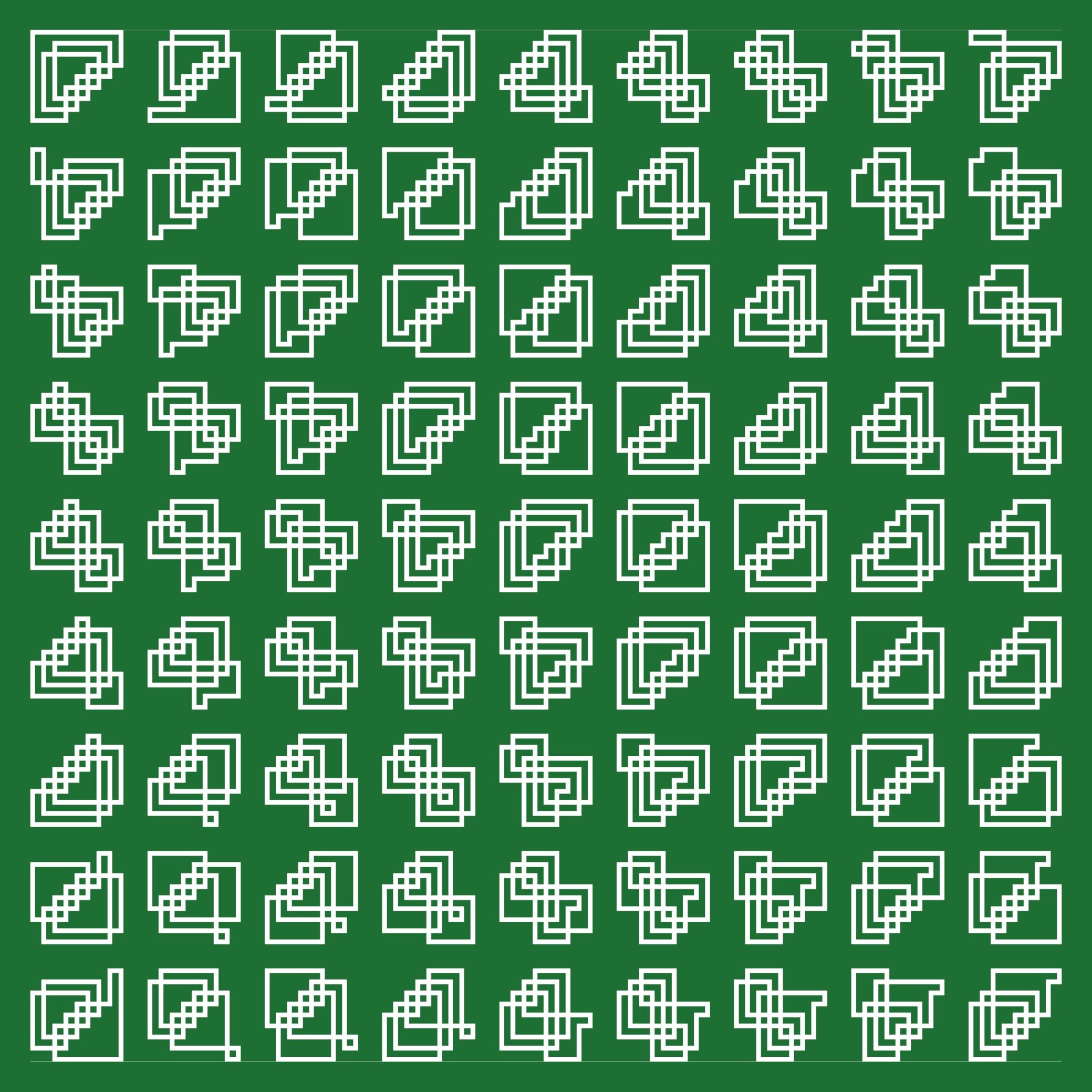
Each row of the Cayley-Sudoku table in Table~1 from their article can be thought of representing a permutation. Pairs of permutations can be visualized with a technique described by Karl Kattchee and Craig Kaplan \cite{Kattchee}; applying this technique to arbitrary pairs of permutations results in a closed path that Reimann refers to as an aster. This process is repeated for each pair of permutations, resulting in the $9 \times 9$ grid of asters.
Background and Inspiration

This work was originally done for use as cover art for the October 2019 issue of Mathematics Magazine. This is the twenty-fourth of 25 original artworks I created for the journal Mathematics Magazine during 2015–2019.
Each row of the Cayley-Sudoku table in Table~1 from their article can be thought of representing a permutation. Pairs of permutations can be visualized with a technique described by Karl Kattchee and Craig Kaplan \cite{Kattchee}; applying this technique to arbitrary pairs of permutations results in a closed path that Reimann refers to as an aster. This process is repeated for each pair of permutations, resulting in the $9 \times 9$ grid of asters.
Related Works
- See the page on Mathematics Magazine Cover Art.
Publication History
- Mathematics Magazine, Cover Art, Vol. 92, No. 4, October 2019.
References
- Boden and Ward
- Karl Kattchee and Craig Kaplan
- Inspired by the article \A New Class of Cayley-Sudoku Tables" by Kady Hossner Boden and Michael B. Ward